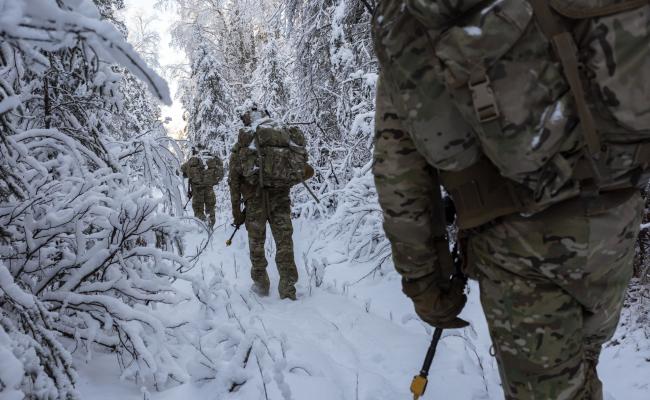NORAD, NORTHCOM Strategy Highlights Changing Strategic Environment in the Arctic

The North American Aerospace Defense Command (NORAD) is a bi-national organization between the US and Canada. It is charged with the missions of aerospace warning, aerospace control and maritime warning for North America. (U.S. Air Force photo by Staff Sgt. Shawn Nickel).
"In today's changing geopolitical environment not to mention environmentally changing world, Canada and the US need to rethink continental defence,” Dr. Andrea Charron, Director of the Centre for Defence and Security Studies says.
The latest strategy from the North American Aerospace Defense Command and U.S. Northern Command (NORAD and USNORTHCOM) was released this week, laying out the strategic vision for the future and priorities for ensuring the defense of the United States and Canada.
“We recognize that competitors and potential adversaries have adapted and developed advanced capabilities in all domains challenging us at home and across the competition continuum, holding at risk our people, our critical infrastructure, and our power projection capabilities,” said General Glen VanHerck, commander of North American Aerospace Defense Command and U.S. Northern Command (NORAD and USNORTHCOM).
Dr. Andrea Charron, Associate Professor and Director of the Centre for Defence and Security Studies (CDSS) at the University of Manitoba in Canada, explains that the strategy builds on the thinking of successive NORAD and USNORTHCOM commanders who recognized that continental defence is often overlooked in favour of deployments away.
“In today's changing geopolitical environment not to mention environmentally changing world, Canada and the US need to rethink continental defence,” Charron writes in an e-mail to High North News.
Arctic focus
The unclassified version of the strategy identifies the Arctic as providing a good example of a "changing physical and strategic environment and is a "zone of international competition."
The strategy notes that both Russia and China are increasing their activity in the Arctic:
“Russia’s fielding of advanced, long-range cruise missiles capable of being launched from Russian territory and flying through the northern approaches and seeking to strike targets in the United States and Canada has emerged as the dominant military threat in the Arctic.”
“Additionally, diminished sea ice and competition over resources present overlapping challenges in this strategically significant region. China is not content to remain a mere observer in the growing competition, declaring itself a “near-Arctic state,” and has taken action to normalize its naval and commercial presence in the region to increase its access to lucrative resources and shipping routes," the document adds.
The launch of the strategy comes just a few days early of the new US Army Arctic strategy, which lays out how the Army can better position itself to operate in the region.
The strategy emphasizes developing and strengthening Arctic partnerships, stating that "we will defend the United States and Canada in and through the Arctic, with allies and partners, including Indigenous peoples and governments, by building Arctic awareness, enhancing Arctic operations, capabilities, infrastructure, and ensuring a credible defense presence. Improving our DA, polar communications capability, and ability to conduct sustained multi-domain operations are priorities."
“It is encouraging to see that the strategy thinks about the necessary and important partnerships with indigengous peoples in the Arctic. Canada has been ahead of the US in this respect,” Charron adds.
Arctic Air Defence Exercise
On Wednesday, NORAD announced it will be conducting the Arctic air defence exercise, AMALGAM DART From March 20 to 26, 2021. The exercise which will include a variety of military aircraft from the Royal Canadian Air Force and United States Air Force.
The aircrafts will be operating out of northern locations including Whitehorse, Y.T., Yellowknife, N.W.T, Edmonton, Alta., Goose Bay, N.L, Iqaluit, Nun, and Thule, Greenland," the NORAD press statement says.
According to the statement, the exercise will provide the opportunity to improve skills as Canadian and U.S. forces operate together with allies and partners in the Arctic.
NORAD routinely conducts exercises using a variety of scenarios including airspace restriction violations, hijackings, and responses to unknown aircraft.



